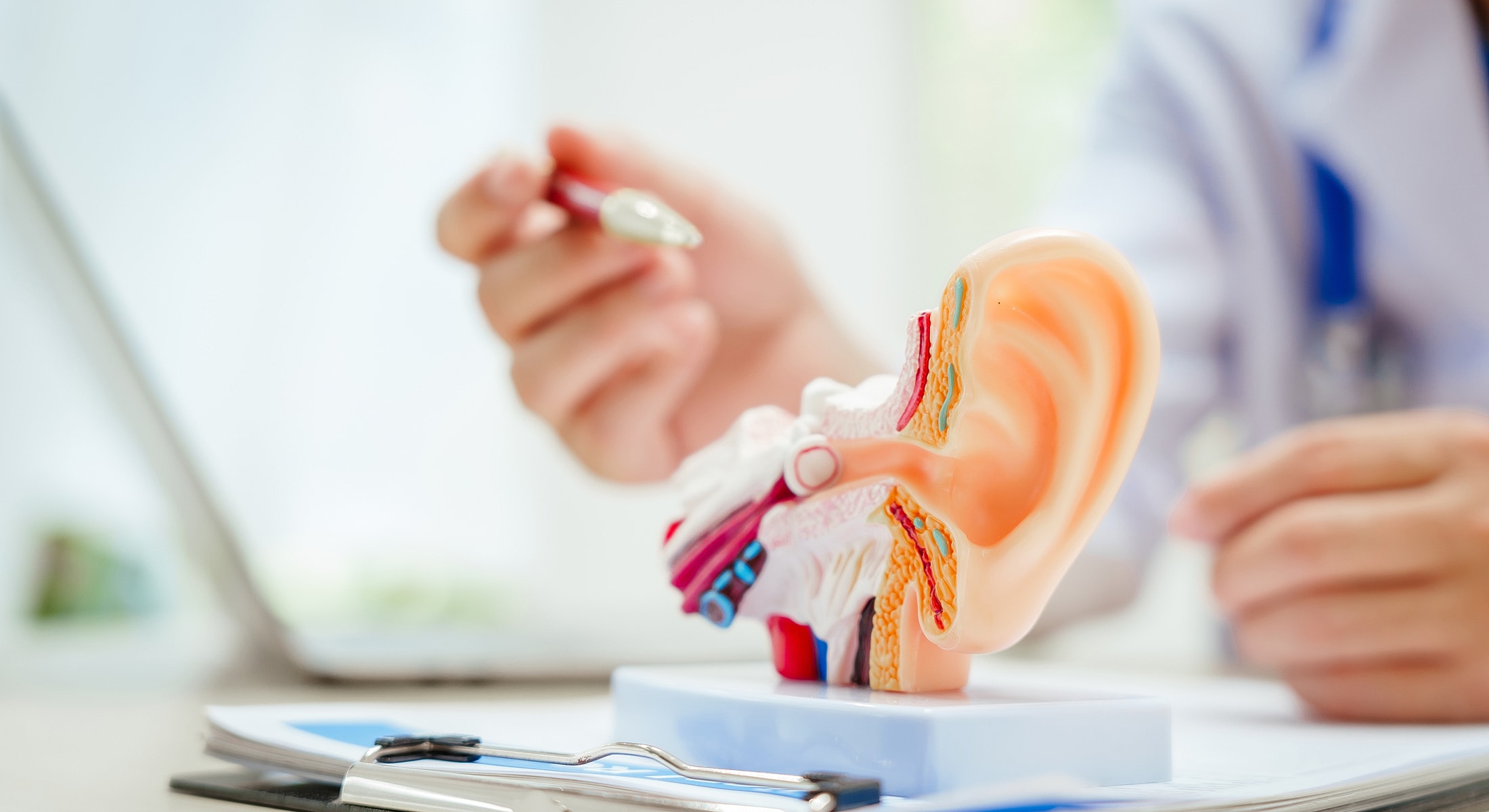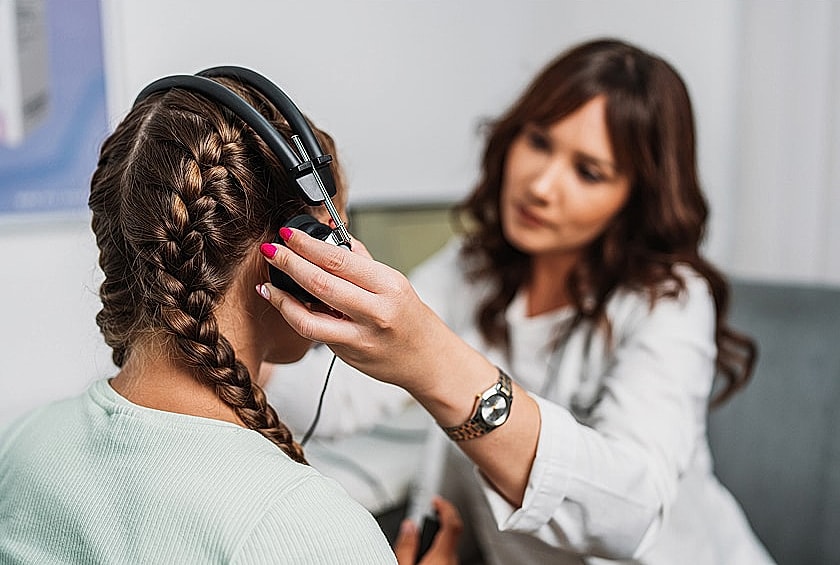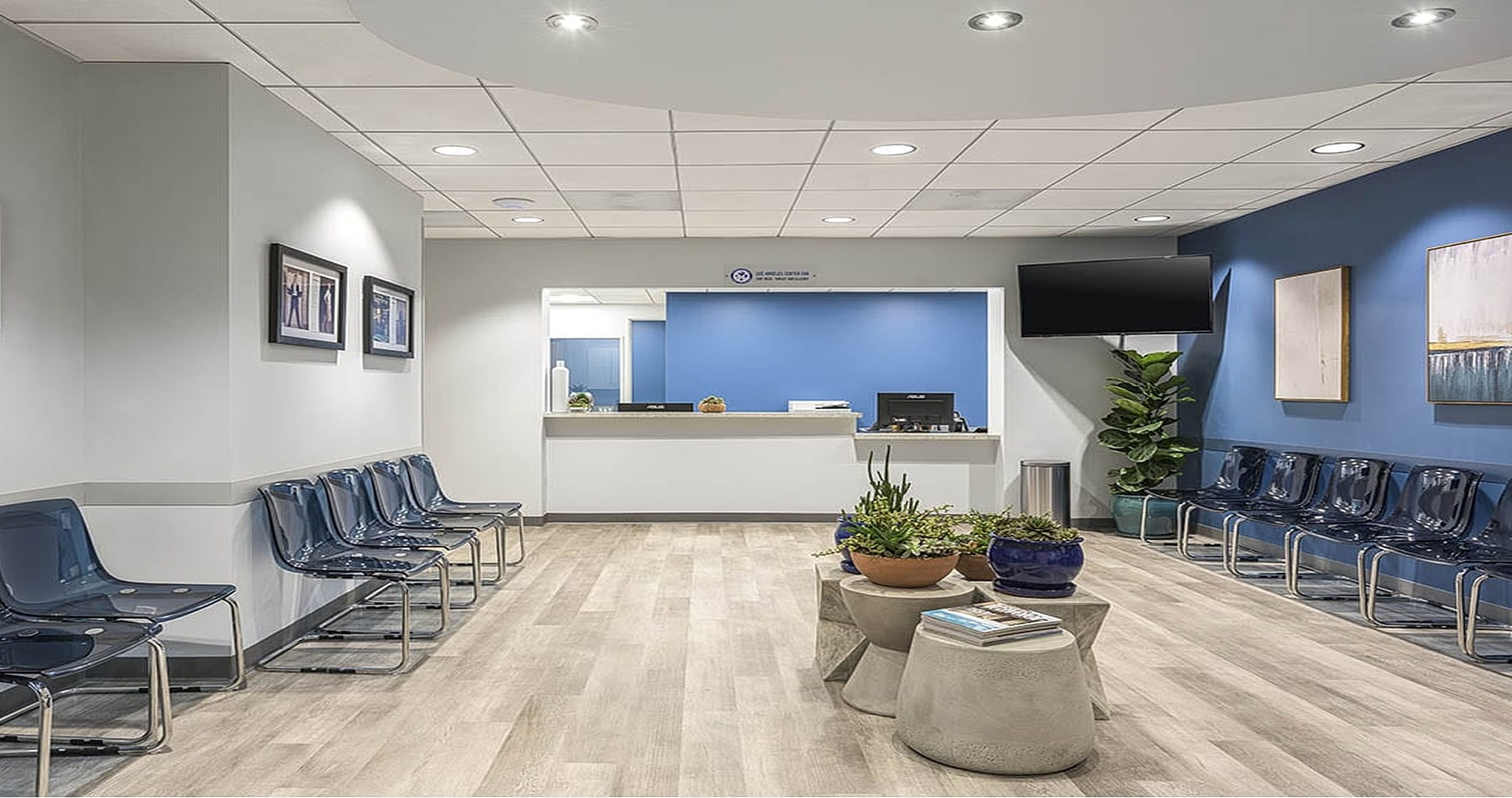If you’re dealing with single-sided hearing loss, conductive hearing issues, or recurring ear infections, a bone-anchored hearing device (BAHA) could be an effective treatment option.

















Hearing loss can affect nearly every part of daily life, from meaningful conversations with family to your ability to fully engage in social and professional environments. For individuals living with single-sided deafness, conductive hearing loss, or conditions that make standard hearing aids ineffective, a bone anchored hearing aid (BAHA) may offer a long-term, life-changing solution.
At the Southern California Center for Ear, Nose, Throat, and Allergy (SoCal ENT) in Palmdale, we provide advanced hearing care backed by leading-edge expertise and delivered with a personalized, compassionate approach. Our experienced ENT specialists and audiologists are proud to offer the latest in bone anchored hearing technology, helping you achieve clearer, more natural hearing when traditional solutions fall short.
If hearing loss has been holding you back, it’s time to consider a new path forward. Contact our team today to find out if a BAHA device is the right choice for your needs.





A bone anchored hearing aid (BAHA) is a specialized hearing device that transmits sound via bone conduction instead of the typical air conduction route. Unlike traditional hearing aids, which amplify sound through the ear canal, a BAHA system bypasses both the outer and middle ear, sending sound vibrations straight to the inner ear.
The system includes two key parts:
This technology offers a transformative solution for individuals who cannot tolerate in-ear or behind-the-ear hearing aids due to chronic ear infections, anatomical differences, or skin sensitivities.
At SoCal ENT, we use the Ponto System by Oticon Medical, a state-of-the-art bone-anchored hearing system designed for exceptional sound quality and comfort. This innovative device sits discreetly behind the ear and transmits sound through bone conduction, delivering a clear, natural hearing experience without blocking the ear canal. Compared to traditional bone conduction hearing aids, the Ponto System offers superior clarity, even in noisy environments, making it easier to follow conversations and stay engaged in social settings.
Designed to be lightweight and non-invasive, the Ponto system ensures a secure, pressure-free fit that supports long-term comfort and wearability. With full wireless capabilities, it integrates effortlessly with smartphones, televisions, and other Bluetooth-enabled devices, allowing users to stay connected to their digital lives.
The Ponto 4 sound processor, among the smallest and most discreet options available, delivers high-performance hearing with an open soundscape that mirrors the brain’s natural way of interpreting sound. Built with the same sophisticated technology found in premium hearing aids, the Ponto System is a reliable, future-forward option for individuals seeking a modern, effective solution for hearing loss.
Your care begins with a comprehensive consultation. The experienced providers at SoCal ENT will take the time to understand your specific hearing concerns and walk you through all available options. During your visit, we’ll perform a detailed hearing assessment, review your medical history, and use advanced diagnostic tools to evaluate whether a bone anchored hearing aid is the best fit for your condition. Our team will explain the entire process, including the procedure, expected outcomes, and recovery timeline, so you feel fully informed and confident in your decision.
BAHA placement is typically done as an outpatient procedure under either local or general anesthesia. Here's what the process involves:
Once the healing period is complete, your audiologist will fit and program the external sound processor to match your individual hearing profile, ensuring the best possible clarity and comfort.
A bone anchored hearing aid is an effective option for individuals who have at least one healthy inner ear and are dealing with specific types of hearing loss. It may be recommended for the following conditions:
For patients with total hearing loss in one ear, a BAHA system picks up sound from the impaired side and transmits it to the better-hearing ear. This helps improve spatial awareness, speech understanding, and sound detection in noisy settings.
Conductive hearing loss occurs when problems in the outer or middle ear prevent sound from reaching the inner ear. This can result from several causes, including:
Because BAHA bypasses the blocked or damaged areas and sends sound vibrations directly through the bone to the inner ear, it can dramatically enhance hearing clarity in these cases.
For those who experience chronic ear infections, drainage issues, or skin allergies that make traditional hearing aids uncomfortable or ineffective, the BAHA system offers a non-occluding solution. Since it doesn’t sit inside the ear canal, it minimizes irritation while delivering clear, reliable sound.

You may be a strong candidate for a bone anchored hearing aid:
Conditions that may be effectively managed with a Bone Anchored Hearing Aid include:
If you’re uncertain whether a Bone Anchored Hearing Aid device is the right solution for your hearing loss, the specialists at SoCal ENT can perform a thorough evaluation and recommend the most appropriate treatment based on your specific needs.

Our Palmdale Bone Anchored Hearing Aid team will guide you through every step of your treatment, offering clear, personalized information so you feel informed, supported, and confident as you move toward better hearing.
Bone Anchored Hearing Aid recovery time after the implant procedure can differ from person to person, but most patients are ready to have their external sound processor connected and activated within three weeks to three months. Once healing is complete, your audiologist will program the device to match your hearing needs and ensure optimal clarity.
As your brain adapts to this new method of hearing, you’ll likely notice gradual improvement over time. With consistent care and regular check-ins, your BAHA device can deliver long-lasting, transformative results.


With a bone anchored hearing aid (BAHA), you can enjoy clearer, more natural sound that keeps you engaged with the people and environment around you.
Unlike conventional hearing aids, which amplify sound through the ear canal, BAHA systems bypass the outer and middle ear entirely. They deliver sound vibrations directly to the inner ear through bone conduction. Once activated, Palmdale Bone Anchored Hearing Aid patients will notice improved speech clarity and enhanced sound localization. The low-profile, behind-the-ear design sits discreetly along the hairline for a seamless, unobtrusive appearance.
The implanted portion of your BAHA is designed for long-term durability and naturally fuses with the surrounding bone, offering a secure and dependable hearing solution. While the implant itself is permanent, the external sound processor may need to be replaced or upgraded every five to seven years to keep pace with evolving technology. With proper maintenance and support, your BAHA can offer a lifetime of hearing improvements, helping you reconnect with conversations, environments, and social experiences with renewed confidence.
And when it comes to ongoing care, adjustments, or device upgrades, the specialists at SoCal ENT are here to guide you every step of the way.
It typically takes about 3 weeks to 3 months for the surgical site to heal before the external sound processor can be attached. Once the device is activated, you’ll begin to adjust to the new way of hearing, with improvements developing gradually over time.
The procedure is generally well tolerated, with most patients reporting only mild discomfort. It is performed under either local or general anesthesia to ensure your comfort during surgery. Any post-operative soreness is typically minimal and can be managed effectively with standard over-the-counter pain medication.
Yes, you can, but it’s important to remove the external sound processor before any water activities like showering or swimming. While the titanium implant is waterproof and safe to get wet, the sound processor itself is not water-resistant and should be kept dry.
For patients with conductive hearing loss, single-sided deafness (SSD), or frequent ear infections, a BAHA device is often a better option. Unlike traditional hearing aids, it bypasses the outer and middle ear entirely, delivering sound directly to the inner ear through bone conduction.
The titanium implant is designed to last a lifetime and typically does not need to be replaced. However, the external sound processor may require an upgrade every 5 to 7 years to stay current with advancements in hearing technology.
Reach out to SoCal ENT to book a Bone Anchored Hearing Aid appointment with our hearing care team. During your visit, we’ll evaluate your hearing, review potential treatment options, and help you decide if a BAHA device is the right solution for your needs.